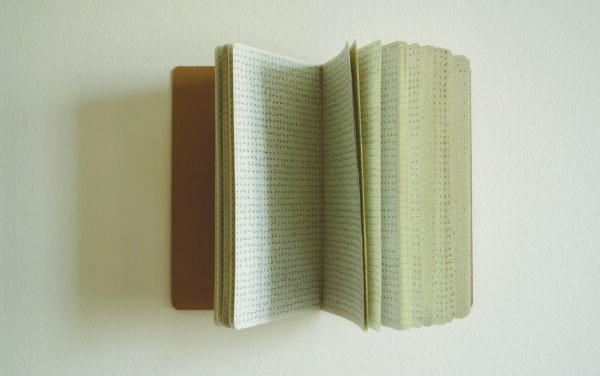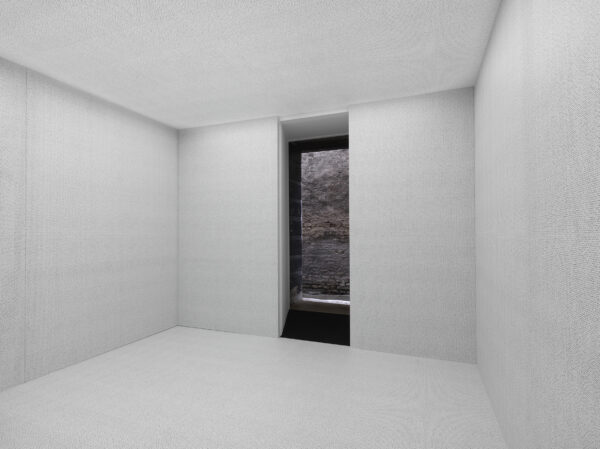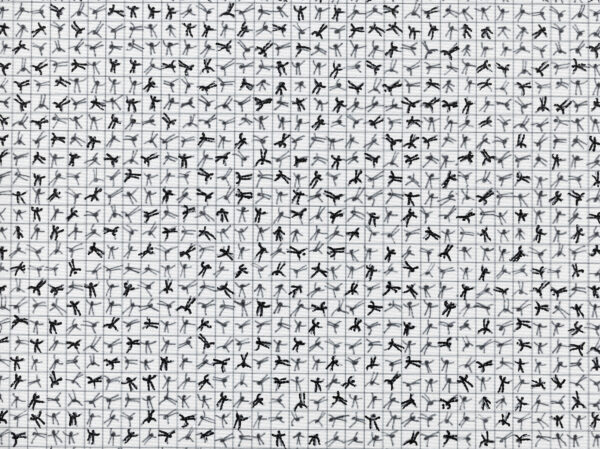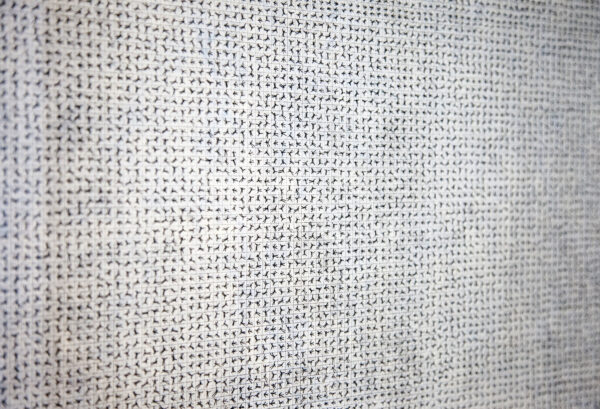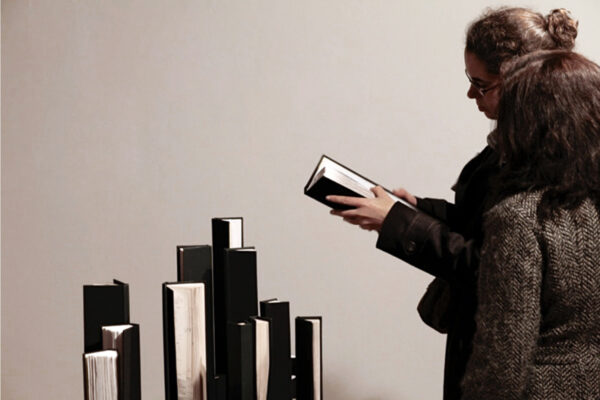
Title
A Diary of Ceaseless Quest for a ‘Society of Unlimited Responsibility’
https://www.doi.org/10.48285/ASPWAW.29564158.MCE.2022.8.5
https://miejsce.asp.waw.pl/en/a-diary-of-ceaseless-quest-for-a-society-of-unlimited-responsibility/
Abstract
The subject of the essay is the artist’s critique of the existing society of limited responsibility on the territory of the former Yugoslav state. The artist discusses an utopian postulate of a possible society of unlimited responsibility and questions whether artistic responsibility could also be seen as unlimited. Lagator proposes to understand artistic responsibility as a social and aesthetic practice that relates to the world in which it emerges by critically understanding and decoding the structural centers of power. Can unlimited artistic responsibility help to put discursive and contextual knowledge before profit, equality before submission, criticism before appropriateness? These questions are positioned as a guide for the following essay, which presents the theoretical research along with the description of Lagator’s artistic works.
DOI
Introduction
From the beginning of my artistic practice, the upheavals of the 1990s in my region have interested me and challenged me to understand the role of art as that which can take over the function of light in times of social and political crises.
The subject discussed in the essay is my critique of the existing society of limited responsibilities through the lens of the spread of unrestrained neoliberalism in the territory of former Yugoslav state socialism and socialist modernism. But also discussed is a postulate, with a self-critical attitude, of a possible society of unlimited responsibilities. This kind of critical questioning of our constructed reality is based on the intention that the subject discussed hopefully fosters and renews the concepts of solidarity, togetherness, and compassion in the current, troubled times. Some of the guiding questions for my quest over the years were addressing the processes that make an unlimited responsibility society possible, and whether the artistic responsibility could also be unlimited? But in what kind of society? I understand artistic responsibility as a social and aesthetic practice that relates to the world in which it is created via its critical understanding and decoding of the structural centres of power. In other words, artistic responsibility works with the development of the culture of the capitalist system in a critical sense i.e. as the critical friend that every system needs. What can be accomplished in such a space? Can unlimited artistic responsibility answer the question of leading the world, giving priority to discursive and contextual knowledge over profit, equality over subjugation, criticism over suitability? These intertwined questions are positioned as a guiding principle to the following essay that is displays theoretical research along with the descriptions of several of my artworks in an attempt to amplify my research on unlimited responsibility.
The Society of Unlimited Responsibility and Ecce Mundi
Research on the concept of unlimited social responsibility comes from a process when, from 2005, namely during the transition from Yugoslav state socialism to capitalism, the Montenegrin government publicly declared to the people of Montenegro that they had an obligation to take the fiscal receipt after each of their purchase. It was a very long process to ‘educate the masses’ in that sense, as it also dealt with the obligation by the state to communicate regularly about the tax obligations of citizens. Often, I noticed those receipts flying everywhere throughout the town, the streets, as nobody actually took them. Could we say that nobody took the call to the awareness and responsibility for that simple act seriously? If we do not feel responsible to fulfil the smallest act that we are asked to, how are we to be able to respond to more complex issues? That is also why I started collecting fiscal receipts from other people, from the streets and pavements, including the dirty, torn and crumpled ones. I wondered if we could take responsibility for others. I noticed that their content, numbers, prices, goods purchased, all faded away with light and time, while exposed to the sun and wind. In essence, to develop my own artistic means, I intentionally collected what can be considered as a waste in real life, in order to critically address the program of modern art that starts when ‘modern art has cut the reference to the world of things’ and when ‘the modern painter limited himself to analysing the available painterly means of representation’,1 namely the point, the line, the plane… Those were complex years of societal transition in the region. But the contrast between the lightness of the paper of the fiscal receipt that is easily taken by the wind, and the meaning of the economic concept written on each of the fiscal receipts – The Society of Limited Responsibility – moved me to imagine its inversion into a more generous and utopian concept, that of The Society of Unlimited Responsibility.2
This act of inversion, as another specific means in my artistic research, brought me to one more specific means – to the processes of translation. I realised how meanings slightly shift from language to language, country to country. But also, how those very slight shifts actually had crucial consequences in terms of understanding their meanings in the different contexts to which they are applied. The term society, used within the mentioned economic concept in countries with socialist background, shifts into the terms company and partnership in more western and countries with longer capitalist commitment. That has launched a series of artworks of mine that deal with the ever-growing questions about the stability of the coming common future on the planet if we continue the limitations of our accountabilities. They question the kind of presence, economy and culture that have lasted at least since modernity, i.e. since this economic term marked the beginnings and spread of capitalism.3
The artwork The Society of Unlimited Responsibility is a notebook which I produced in artistic residency at the Neue Galerie in Graz, during the winter of 2006. It was through the process of translation, that I witnessed as an active emancipatory and intellectual agency in socialist Yugoslavia, that I, facing my world, very early on in my artistic practice, became so interested in the forms of a book and a notebook. Also the relationship between text and drawing in dealing with societal issues conveys a sense of fusion between the arts, which I often refer to through the principle of Mallarmé that ‘the world exists to lead to a book’. The work The Society of Unlimited Responsibility contains pencil drawings on each page with a squared grid pattern, in which each of the humanoid pictograms inhabits individual squares. Each claims its own space; each is free to move within and through the boundaries of their space. Thus, flipping through the pages of this piece provides an optical illusion of their movement, free dialogue and expression. Their plurality creates the society. Their society creates individuals. As a collective, in their silent co-presence, they move without bounds, individually and reciprocally, because they are beings of the UN-limited responsibility society.
What kind of space can make such a peaceful co-existence possible? What manner of politics is practised in this society? Is peaceful co-existence possible? How and by what actions are we building the collectivity? How does communication contribute to the formation of society and inclusive living space? I drew the figures one by one, page by page. This kind of making visible of possible collectivity is based on reflecting about the potentials of shared space and equilibrium based upon political awareness of the multitude that constitutes it. I wondered if an artwork could instill wonder among the audiences about the processes that enable this kind of peaceful and social co-existence possible. ‘The relational co-constitutive spatiality between society and individual and vice versa is made visible, in their co-productive temporal evolution.’4 These ‘people’ provide an example of how space, divided amongst different cultures, peoples, nations, religions, languages, and epochs, becomes a boundless co-residence and lasting connectedness.
Since modernisation has demonstrated how human life is organised when the primacy is given to capital, in later years, I developed this piece in various different contexts, mediums and forms. In Ecce Mundi (2013),5 the humanoid shapes, reduced to pictograms, conquer the spaces of the ceiling, the floor and the walls of the constructed canvas-wrapped cube. The audience encounters a nearly monochromatic empty room, seemingly white, and can walk through that ‘image’ of the existence of worlds in peace and harmony. Only on looking closer are the rotating multitude of tiny humanoid pictograms perceivable.6 I was interested in the processes of artistic recycling of an idea, so I scanned each page of the The Society of Unlimited Responsibility, multiplied and printed them on room-sized canvases. Only after this mechanical process was completed, I wanted to exceed it, so I drew every second pictogram anew in ink. Ecce Mundi grew as a manifesto of a harmonious society where mutual actions are adjusted according to the needs of the many worlds that share the same planet.7
This multitude in harmony speaks to us about how the processes of mutual co-existence and differences concern contemporary art. Because, namely, the discourse of contemporaneity is characterised by frequent social and environmental instabilities, precarious positions, both social and climatic, continuous socio-political conflicts. We are witnessing paradoxes due to which a creation becomes value extraction, and social crises receive unpredictable dimensions. Artists cannot remain indifferent within the growing awareness of continuous precarity, exploitation and efforts by the ruling hierarchical power structures to marginalise artistic production and the cultural sector as a whole. What can be achieved by artistic responsibility, as an open research forum, and its operation through the horizontal-network connection enabled by the digital age, is an artistic language intended for wider social layers, which recent theories call commOnism.8 In those theories, culture has a basic role in the development of a society precisely because it makes visible the meaning of common goods, social communities, ecology, economic and political solutions that do not primarily exist for the sake of individuals or private property, but for the sake of community and common survival.9
The Society of Peaceful Coexistence
The installation Society of Peaceful Coexistence consists of nine identical algraphy prints. They visualise a large number of rotating human pictograms, which are visible only upon a closer look. This multitude, which coexists peacefully, emanates the idea of a democratic horizon, connectedness, solidarity and sharing. The prints have been made using the technique of algraphy, a process similar to lithography, but using aluminum as the support, while at the same time questioning it. As applied here, the technique is particularly well-suited to the content, given that it allows for reproducibility, but on the other hand also for critical awareness of the extractive behaviour of humans toward living10 and natural11 environment. Therefore, on the level of the formal solution and visual form, these three artworks (The Society of Unlimited Responsibility, Ecce Mundi and The Society of Peaceful Coexistence) shift between the meduim of a notebook, wall painting, spatial instalation, plane and surface in order to reflect my critical concern about the social, political, cultural and economic relations within a region of former socialist space of Yugoslavia in which I was growing up. They are also a comparative study via the painterly means of representation, namely the point, the line, the plane, out of which I composed the humanoid pictograms, in my quest about how to un-limit artistic responsibility to analyzing the world of real things. The humanoid pictograms of this work reside in the sphere of peaceful co-existence.12 What is the kind of space that makes such co-existence possible? Is politics of peaceful coexistence achievable? By what means do we constitute collectivity? What shapes our common destiny on the planet? In search for the answers to these recurring questions, I find critical investigations by thinkers such as T. J. Demos, 13 Saskia Sassen, 14 Bruno Latour 15, Anna Tsing16, Franco Bifo Berardi17 relevant. Their efforts of making us aware about instability of the time we are living in and human impact on the planet are politically relevant and are my guiding source to the understanding of what unlimited artistic responsibility could be. We all know that art can make visible, but unlimited artistic responsibility asks for proactivity because it questions the visible and states that only through collaboration and mutual support we can create directions forward.18 That support can be intercultural, intersectional, interdisciplinary, but above all it must be among humans and among species. Only then, it is in support of peaceful co-existence.
One of the questions that is neglected in the contemporary network of relationships is the question of what humanity objectively needs, primarily in terms of its own survival,19 but also of survival of other species.20 Are we today longing for innovative biological, digital or nano technologies, for post-human, new currencies, more up-to-date information, the endless accumulation of capital, and thus the influence of the already influential? Or, perhaps do we need to redefine the ways through which we as a society might be able to create a more prosperous and peaceful future for more-than-human worlds?
The Knowledge of the Limited Responsibility Society
The answer to these inquiries leads us to the question: ‘Who rules the world?’ – which is posed by Chomsky. If we follow his division of the world into two, namely the plutonomy and the precariat, we see that a system of predatory capitalism is at work, governing the population, the territory and the environment.21 Such a division has enabled an uncompromising increase in the power of the already powerful, and the loss of the revolutionary and critical potential of the wider social masses who could be able to bring about changes.
I use photosensitive fiscal receipts as indexical traces of consumerist activities and as signs of a culture of limited responsibility. Experimenting in the socially constructed sphere means accepting it as a political symptom of contemporary society. My installation The Knowledge of the Limited Responsibility Society consists of a cityscape composed of books of different sizes that are hand-made out of globally collected fiscal receipts. They are also leftover facts about the condition of the lack of responsibility for our common world. That is why this work is conceived, from the position of a society that has undergone the transition from a socialist to a capitalist type of management and production. Here, the medium of installation becomes a collection – of survived fiscal receipts, of the visual trace of the call to responsibilities, of the visible trace of the limited responsibilities. Can we say that in a society with transitional consequences, where the ‘art sector is underdeveloped or not hand in hand with the capital’22 , the possibility of political and the corrective role of art, when it dares to take place in the middle of the system it criticises, is an art of unlimited responsibility?
The installation as a dispositive transcends the language of form because it is at continual disposal to an audience that can read the books’ contents and thus continually modifies its form. But the contents are hours of facts of consumerism, months and years of goods produced, each followed by a price and the according amount of tax paid. That is also why I arrange the receipts according to their lengths and widths, so that the books, like elements of a cityscape in this installation, are different in their size, but also different in the amounts evidenced. What connects those books is the rule of the sector of economy and commercial law that asks each of the owners of a company that issues the receipt to be registered as a Society of Limited Responsibility. And we are given time and space to read about that fact each time when we take the receipt home with us. How does this information resonate with us?
Evidently, we are all owners of the knowledge that responsibilities are limited around us.23 If art reflects a society in which there is a continuous discussion about the concepts and policies that develop that society, every informed being is interested in the reflection of her/his actions in the eyes of others, both because of the intention of spreading her/his influence and because of the potential critical, and so developmental, effect on the observer. The dystopian knowledge we face every day is here made visible, and it is growing as a process and ongoing installation contemporarily with its plurality of societies.
Limited Responsibility Society Automatism
In my ephemeral interactive installation Limited Responsibility Society Automatism (2012), I further developed the use of the international economic term SaRL (Socitété à Responsabilité Limitée)24, to create spatial forms reminiscent of ancient temples. I did not use receipts produced by citizens here, but blank thermal paper bill rolls, which in the everyday institutional chain of global consumerism are used for the production of fiscal receipts. I filled them with a textual content which is visually similar to the one we are familiar with, yet with an important conceptual difference. Namely, in addition to the original products and their prices25, I programmed into the borrowed fiscal cash register certain intangible values such as ‘feelings’, ‘love’, ‘memory’… in order to assign prices to them. These new items are inserted between those we need existentially, such as water, milk or bread, thus becoming intruders within the established system of the trading world. On the hanging paper strips that fade over time the audience can read that in societies of limited responsibilities one can also ‘buy’ knowledge, long-lasting love, experience, a job, a sunny morning, power, career, success, a future…
These textual compositions are typed using a fiscal cash register by combining the principles of automatic writing, of concrete and of visual poetry. By unwinding the rolls and reading them, the audience simultaneously deconstructs the installation – the column as an element of a whole – while being confronted with dramatic moments of current social conditions. But it also becomes informed and aware of the process of the growing trade, in known and unknown means, that becomes possible in times of orchestrated alienation, exploitative isolation and limited responsibilities.
One very important aspect of this textual composition and visualisation of dystopia in relation to automatic writing is nevertheless the critique of the contemporaneity through automatisation and mechanisation to which we testify. But as well, when repeated, words after words, notions after notions, what visually appears are the blocks of words, which are also reminiscences of apartment blocks, those of the brutalist architecture within which I grew up in socialist Yugoslavia. 26
With this work it became obvious to me that the constant critical possibility of examination through translation27 and language is necessary. This critical examination might prevent that we do not fall into the trap of excessive identity politics and to potentially unveil how the strict meanings would not cover up what can be implied by them (as is demonstrated by the economical term Limited Liability Company that I have discussed above).
Conclusion: Un-limiting artistic responsibility
In my practice as an artist, I understand the ethics of artistic responsibility in our current complex times as based on the possibilities of developing solidarity, sharing, commonality and compassion. As such, it is primarily a means for making visible what is not immediately apparent, but also exceeding the making visible and intervening with care in the societal realm. If the defense of critical thinking and imagination in the arts for its ability to be an active participant in the development of an ethical-political awareness, sense of urgency and shared citizenship in any given space, is taking place, then we might speak of the art of unlimited responsibility. In that way, it can be seen as a kind of practice that is in a constant state of relation, immersion and rehearsal of interconnectedness, of mutual respect between the subject and the environment, and that is questioning itself, its own formal as well as institutional structures.
To un-limit artistic responsibility is similar to conducting the research to a level when it becomes apparent, visible and understandable, but also political, in the sense of Rancière – dealing with the disagreement and the difficult. In Boris Groys’ words…’it is contemporary art alone that is able to demonstrate the materiality of the things of this world beyond their exchange value’.28 Therefore, it can also be said that unlimited artistic responsibility that is free of the boundaries of the system in contemporary art lies in knowledge creation, a process that we can also understand as artistic research and relational ethics. Tied to others, our shared sense of the environmental and more-than-human worlds, it quotes from everyday social life and transforms those quotes in critical, poetical and ethical-aesthetical language.
In a society of unlimited responsibility, art is also unlimitedly responsible. This may also imply the development of the notion of the total work of art. The art of unlimited responsibility questions the visible, exceeds that questioning, and urges us not only to see and become aware but to understand the polyhedron of relationships between: the artwork and the audience, the representational and institutional tactics, the way in which we can find possibility through bio-culture to live in right reciprocal relationship to the soil and land. The art of unlimited responsibility participates in offering answers about our transient society via the discussion, description and recovery.
- Peter Weibel, ‘For Another Reset: Renaissance 2.0’, in: Bruno Latour and Christophe Leclercq eds., Reset MODERNITY, Cambridge MA: ZKM / Center for Art and Media Karlsruhe and The MIT Press, 2016, 517. ↩︎
- In the Serbo-Croatian language, this title is called Društvo s Ograničenom Odgovornošću (DOO). In France and in Italy it has literally the same meaning as Société à Responsabilité Limitée (SARL) and Società a Responsabilità Limitata (SRL). Translating this literally into English, the result is: Limited Responsibility Society – a company whose liability is limited to the financial contributions of its members. But in Great Britain the meaning changes slightly to Limited Liability Partnership (LLP); in the United States it becomes Limited Liability Company (LLC); in Germany Gesellschaft mit beschränkter Haftung (GmbH), and in Russia О́бщество с ограни́ченной отве́тственностью (OOO).’ See Irena Lagator Pejović, The Society of Unlimited Responsibility, in: The Society of Unlimited Responsibility. Art as Social Strategy, 2001–2011, Neue Galerie am Universalmuseum Joanneum Graz, Köln: Verlag der Buchhandlung Walther König, 2012, 78. ↩︎
- Croatian scientist in the fields of law and economy, Ivan Toth, argues that the origin of the economical legal term, Limited Liability Company, Société à Responsabilité Limitée SARL, can be traced back to the early 17th century. He even states that the Dutch East India Company (Vereenigdje Nederlandsche Geoctroyeerde Oostindische Compagnie, VOC), which existed from 1602 for almost two centuries, until it was nationalised in 1800, can be understood as the world’s first real transnational corporation that was also the first to issue shares and bonds: ‘The story of joint stock companies began with the efforts of Dutch merchants to wrest control of the lucrative Asian spice trade from Portugal and Spain. Europeans craved spices such as cinnamon, cloves, nutmeg and pepper not only to add flavour to dishes but also to preserve food. Spices have been traveling from Asia to Europe via the Silk Road for centuries, but after the Portuguese discovered a sea route to India that led to the Cape of Good Hope, new and irresistible business opportunities arose’. Ivan Toth, Stvorena je prva korporacija - Nizozemska istočnoindijska Kompanija - tvorevina koja će nadići državu, voditi ratove i zagospodariti svijetom, published on 20. ožujak ’20. https://www.advance.hr/tekst/20-ozujka-1602-stvorena-je-prva-korporacija-nizozemska-istocnoindijska-kompanija-tvorevina-koja-ce-nadici-drzavu-voditi-ratove-i-zagospodariti-svijetom/ (accessed: 4th April 2020). ↩︎
- Lagator Pejović ‚31. ↩︎
- Exhibited as part of my Image Think pavilion at the Montenegrin Pavilion at the 55th International Art Exhibition - La Biennale di Venezia. ↩︎
- Approximately one year earlier I was interested in writings by Italian semiologist and philosopher Paolo Virno and his book the Grammar of Multitude: for an Analysis of Contemporary Forms of Life (New York: Semiotext(e) Foreign Agents Series, 2004). His critical thoughts also address the developments during the 17th century, like the Croatian economist Ivan Toth. For instance, Virno’s analyses about the differences in understanding the notions of the ‘multitude and the people’ made me think that it is possible that the ‘tone of the meaning of the term LLC/Limited Liability Company is imposed by capitalist society and that may be aimed at subversive action on the capacity of the multitude’. Virno understands that ‘if there are people, there is no multitude; if there is a multitude, there are no people.’ He explains that: ‘The choice between these two opposite concepts was the centre of political-social categories and theoretical-philosophical controversies of the modern era in the processes of establishing centralised modern states, incorporating the opposite views of Baruch Spinoza and Thomas Hobbes. For Spinoza, the multitude represented a permanent form seen in human freedom, and the social and political existence for many, for the collective action of joint actions without becoming One. Virno develops Spinoza’s thought and says that the multitude does not renounce the ‘One’, but redefines it. For Hobbes, the concept of people refers to the notion of the state and from the establishment of the notion of a state, there should be ‘One-nation’. According to him, the notion of multitude, unlike the notion of people, would abolish political unity and oppose authority’. Irena Lagator Pejović,’Doxa and the Paradox of the Limited Liability Company (Society)’ AM Journal of Art and Media Studies 16 (2018): 147-158. doi: 10.25038/am.v0i16.260 ↩︎
- This piece was also the process that influenced future research that will develop it further into my artworks and exhibitions that will work with the relevance of the non-human and more-than-human worlds. ↩︎
- This new ideology and aesthetics of reality starts from the necessity of solving the problem of property sharing, as well as ecological problems recorded and escalated by the dominance of neoliberal policies from the seventies of the last century, which turned everything that was common into private and capital property. Through social cooperation, establishing completely new forms of cooperation without money, without competition, with increased doses of solidarity, humanity, ecocriticism, commOnism implies the possibility of a total personality, a person who is able to respect the local context and understand the global condition. The concept of three communities is primary, first of all in terms of ecological priorities such as water, food or air, then social community in the sense of free education or health insurance, as well as the community of free and open communication networks. The Canadian Marxist Nick Dyer-Witheford, the author of this term, has since 2007 linked it to the English word common, which means something that is common, general, mutual or solidary. Its theories are identified with the complexity of the relationship between culture and society, politics and economics, and are focusing critically with the fact that we are an information civilisation. Nico Dockx and Pascal Gielen eds., Commonism. A New Aesthetics of the Real, Amsterdam: Valiz, 2018, 55. ↩︎
- Such practices organisationally mean, for the most part, trust in self-organisation, and not in subsidies or exclusively private sector investments, and thus the questions of plurality, tolerance and dialogue. They mean intention, determination and concentration on the problem. Such an organisation of work implies a demanding joint consideration of values in art, negotiation of concepts, theoretical positions, consensuses, but it also opens up possibilities of constant and active work and collective production. The goal of this type of artistic collective creative work is a collective success despite the risks that common value is produced more slowly or with difficulty due to a certain percentage of disharmony regarding the perception of common value as such. That is why the artistic practices of commOnism are those that are based on relational processes: art that involves the observer, participatory practices, heterogeneity, relative equality of all involved in production processes, which co-create, which are based on the co-production of exhibitions, theatre collectives, and above all, those that invite audience involvement. Rudi Laermans, ‘Notes on Artistic Commoning’, in: Commonism, 139 ↩︎
- American sociologist Richard Sennett explains that an emphasized social issue was already expressed by the organizers of the world exhibition in Paris in 1900 (Paris Universal Exhibition), namely in the Social Economy Pavilion. Richard Sennett, Together. The Rituals, Pleasures and Politics of Cooperation, New Haven and London: Yale University Press, 2012, 35-40. ↩︎
- As Graham Harman put it, Latour has explained that modernity has divided the world into two opposite concepts, human and natural. Graham Harman, Prince of Networks, Bruno Latour and Metaphysics, Melbourne : re.pres, 2009, 57. ↩︎
- Peaceful co-existence is one of the principles of the Non-aligned Movement – a cultural-political heritage to which my former country of origin, Yugoslavia, actively contributed. Bojana Videkanić, Nonaligned Modernism. Socialist Postcolonial Aesthetics in Yugoslavia, 1945-1985, London and Chicago, Montreal and Kingston,: McGill-Queen’s University Press, 2019. ↩︎
- American theoretician T. J. Demos introduces the term petrocapitalist Anthropocene and identifies natural capital, i.e. man’s perception of nature exclusively as capital for further paradoxical investments that build our collective destiny on the planet without the consent or opinion of the majority, but by their planned exclusion by the well-organised First World of capital over increasingly subjugated Third World. T. J. Demos, Against the Anthropocene. Visual Culture and Environment Today, Berlin: Sternberg Press, 2017, 47. ↩︎
- Saskia Sassen, an American sociologist of Dutch origin, explains these processes with the conceptual pair of shrinking economies and growing expulsions. She warns us that in the ongoing brutal global economy, it is not only a question of capital transformations, but also geopolitical, cultural and, above all, ethical transformations. She concludes that the concept of the global north, which really developed the middle class during the 20th century, has completely transformed into the world of the predatory elite, which is no longer attached to the other parts of the world or belonging to them, but is in the process of creating a specific interweaving of the system with the finances of the elite, in which she sees a very hard-to-solve problem of capital concentration.Saskia Sassen, Expulsions. Brutality and Complexity in the Global Economy, Cambridge, Massachusetts: The Belknap Press of Harvard University Press, 2014, 13. ↩︎
- In his book We Have Never Been Modern, Latour explains that with the rise of science and technology and distinguishing man from other forms of existence such as plants or animals, things or objects, the social from the natural world, in fact, we have produced two separate understandings of existence as such. On the one side there is the human side, and the non-human that does not have the ability to think, is on the other side. Such a perception is defined as modernity and as humanistic, self-sufficient and self-affirming, and at the same time purifying or selective. Bruno Latour, We Have Never Been Modern, Cambridge, Massachusetts: Harvard University Press, 1993. ↩︎
- According to Anna Tsing, living with insecurities, on failures, on lies, on disappointments, on sufferings, on frauds, in constant struggle, in readiness for rapid changes and fluid identities, does not represent an optimistic view. That has become the only possibility of life within the countless faces of endless capitalism, which is why she calls for non-imperialist environmentalism. It would be necessary, in the era of human destruction brought about by the mistakes of modernist promises of a progressive future, to try to revive the curiosity of the human species, the way of perception and, above all, transdisciplinary engagement and study of life on Earth. She expresses the hope that unexpected consequences that affect all inhabitants of the planet can be prevented through such study, and that only after more responsible production and constant renewal, verification and negotiation of a more ecological way of life, the severe consequences of industrial engineering for the survival of life can be prevented. Anna Tsing, ‘Haunted Landscapes of the Anthropocene’ in: Anna Tsing, Heather Swanson, Elaine Gan, Nils Bubandt eds., Arts of Living on a Damaged Planet, Minneapolis, London: University of Minnesota Press, 2017, 5. ↩︎
- An Italian philosopher and activist who writes about post-industrial capitalism, Franco Bifo Berardi expresses his doubts about the possibility of conceiving of a man who, during the 20th century, a century that believed in the future, accepted that his work and intellect were dominated by the machines. Franco Bifo Berardi, After the Future, Edinburgh: AK Press, 2011, 164. ↩︎
- In my recent interactive installation Nets, Nodes, Horizons, 2020, through the administration of the host institution, I engage with hired workers form the state labour office to prepare the installation for the next exhibition together with me, and hold a dialogue about the political relevance of art and culture. ↩︎
- French urbanist, Marxist philosopher and sociologist Henri Lefebvre spoke about a unitary theory of space that would encompass the physical (nature), mental (logical and formal abstractions) and social space. He was interested in the issue of sensory phenomena that can be experienced in public and urban space and, through refined sensibility, weave the way to the imagination of a social utopia of unity, at the same time clearly calling the economic sector to be responsible for the development of wider areas, from urban to regional and continental. He especially emphasized the connection of energy, space and time, and advocated the theory that none of these categories can be viewed as an independent abstraction, which, in the current capitalist ecocide, we are still intensively witnessing. Henri Lefebvre, The Production of Space, Oxford: Blackwell Publishing, 1991, 11. ↩︎
- For instance, the French philosopher Félix Guattari pointed out in 1989 that very accelerated processes of scientific and technical changes were underway on Earth which will call into question the survival of life on the planet. At the same time, the paradox is also obvious - while the scientific and technical conditions of economic development are apparently improving more and more with the invention of new materials, machines, and products, the quality of human life is getting weaker on a daily basis, both at the individual and collective levels. All forms of life and communication are rapidly degrading, whether we are talking about the context of family, friendships, neighborhoods, while the technocracy remains mute and insensitive to such changes, satisfyingitself exclusively with apparently ethical-political ambitions regarding environmental pollution. Félix Guattari, The Three Ecologies, London: The Athlone press, 1989, 28. ↩︎
- Noam Chomsky, Tko vlada svijetom? Lijevak, Zagreb, 2016, 83-84. ↩︎
- Tevž Logar, Vladimir Vidmar, ’Introduction’, in: Jasmina Cibic: For Our Economy and Culture, Muzej in galerije mesta Ljubljane, Ljubljana, 2013.14. ↩︎
- Donna Harraway develops the term responsibility into a pair of notions of response and ability. Her call to response-ability is a call to our becoming more sensitive toward the issues that concern life on the planet, on Gaia. Donna Haraway, Staying with the Trouble. Making Kin in the Chthulucene, Durham and London: Duke University Press, 2016, 98. ↩︎
- It is since 2002, and my artwork Witness of Time – Now, that I have conducted research devoted to the proliferation of limited liability companies and consequent lack of responsibility in our surroundings. In this site-specific work, that was exhibited at the Reconstruction, 4th Cetinje International Biennial of Contemporary Art: ‘Housing Sculpture’ and the focus is on making visible the act of ‘resistance’, which responds to the direct consequences of the neoliberal demagogy of continual economic growth at the cost of demolishing public goods, communities, and instrumentalisation of life as such. While examining housing in a wider context and drawing attention to current social and urban phenomena, this installation reminds us of omnipresent insisting on specific interests of individuals, their LLC’s and certain interest groups under the pretext of individual freedom and brighter future. As Ilaria Mariotti put it: ‘In Witness of Time – Now, the characters are the absent owners of an apartment building whose construction was begun in 1989 and was completed in 2002, but was uninhabited until 2003. The apartments had been sold many times over, resulting in an infinite series of lawsuits that resulted with the long process of waiting for moving in for actual owners. Irena Lagator, on that occasion, located many owners who, after she had taken photos of them, temporarily found a place inhabiting the open shutters of the still-empty building. The owners virtually lean out the windows of the palace. However, they continue to be excluded from their houses, just images pasted up and portrayed as busy with their daily household routines, displaying a kind of potential reality which is yet denied to them.’ Irena Lagator Pejović, The Society of Unlimited Responsibility, 28 ↩︎
- I suggest revisiting the third footnote in this essay since cinnamon, cloves, nutmeg and pepper are also among the goods programmed in my installation. ↩︎
- As I grew up in socialist Yugoslavia in the 1970s and 1980s, and received impulses from the aesthetics, experimentation, and avant-garde autonomy of its socialist modernist culture, I also witnessed and followed how extensive and active it was in the educational sector, especially when it comes to the issue of translation and synchronisation with the rest of the world. Rather, the transition during the 1990s was obvious to me, until, as an art student, I no longer had the opportunity to read critical, philosophical and sociological discussions about art in my own language. The means of publishing activities in education, culture and art were cut to the core. There were no more magazines, no more analogue sources of information. It seemed that everything stopped, while e-mail and the internet were appearing on the horizon. It seemed like neither art, nor culture, nor education existed anymore if their global development could no longer be followed in my language. Simultaneously, everything that had already been translated, especially from the 1950s onwards, books, entire editions, magazines, all gained a new value that was inscribed into them by a past that was far better than the present. I have witnessed the closing of bookstores. Very soon, the nostalgia for influences that come from other languages and cultures, the need for diversity, improvement and refinement that comes from others, could be felt. ↩︎
- I was motivated by the issue of translation and language, because language is one of the crucial formative elements and processes in developing and leading a society. Philosopher Boris Buden argues that socialist Yugoslavia with its authentic society of industrial modernism, in the setting before the global age, was also an authentic society of translation, that had guaranteed its position in the world precisely because it had been conscious about plurality of its inner horizons and their possibilities of a dialogue with outer ones. Boris Buden, Muzej praznih ruku; Čemu Jugoslavenski studij?, in: Ildiko Erdei, Branislav Dimitrijević, Tatomir Toroman, eds., Jugoslavija: zašto i kako? Museum of Yugoslavia, Belgrade, 2019, 79-101. ↩︎
- Boris Groys, ‘Art and Money’, e-flux Journal, issue #24, April 2011 https://www.e-flux.com/journal/24/67836/art-and-money/ ↩︎
Irena Lagator Pejović
Irena Lagator Pejović (born in 1976 in Yugoslavia) is a visual artist. She received her PhD from Singidunum University in Belgrade. She represented Montenegro with the solo show Image Think at the 55th Venice Biennale in 2013. Other solo shows include
Società a responsabilità limitata, Villa Pacchiani (Santa Croce, 2012) and The Society of Unlimited Responsibility, Salon of Museum of Contemporary Art (Belgrade, 2012). She has exhibited internationally since 2000 in shows such as, Art At Work, Museum of Contemporary Art (MSUM), Ljubljana 2022/23, D’une Méditerranée, l’autre at FRAC,
Provence-Alpes-Côte d’Azur (Marseille, 2017), Normalities, Austrian Cultural Forum (New York, 2016), Fiery Greetings, Museum of Yugoslav History, Belgrade/Lothringer13—Städtische Kunsthalle München (2015),The Sea Is My Land: Artisti dal Mediterraneo, MAXXI, Rome/Triennale di Milano Design Museum (2013, 2014), Spring Exhibition, Kunsthal Charlottenborg (Copenhagen, 2013), andUntitled (History), 12th Istanbul International Biennial of Contemporary Art (2011).
